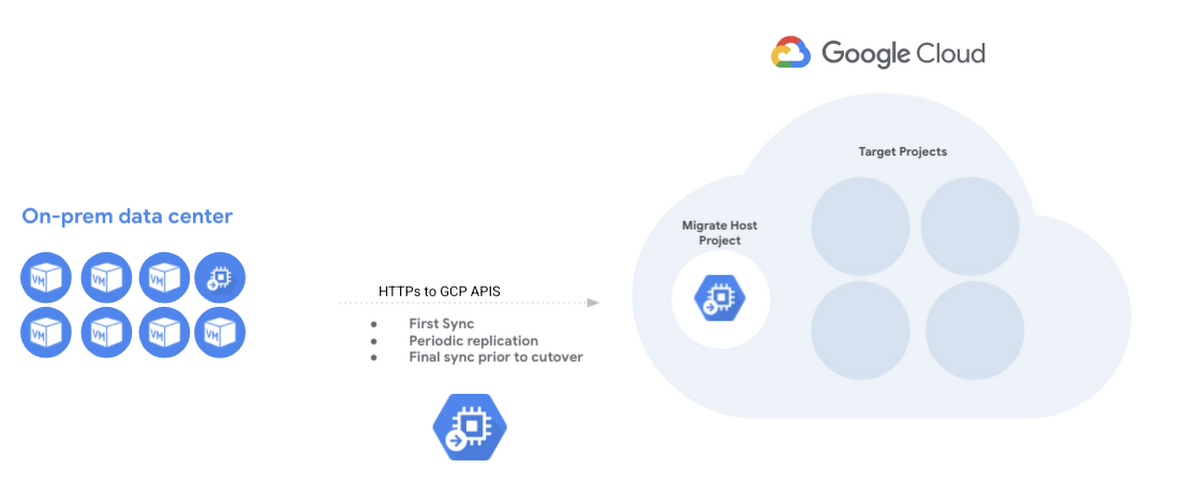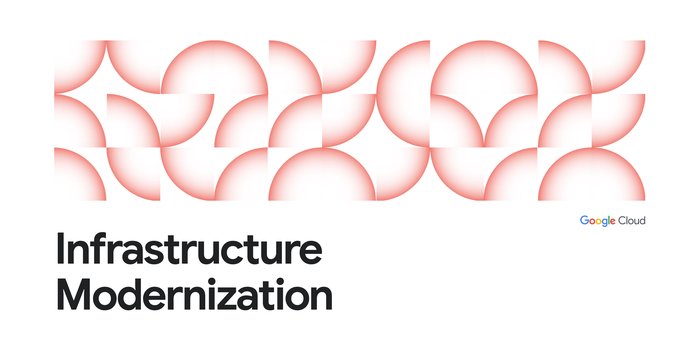Simplify VM migrations with Migrate for Compute Engine as a service

Nimrod Shavit
Senior Product Manager
Sai Gopalan
Product Management, Google Cloud
Try Google Cloud
Start building on Google Cloud with $300 in free credits and 20+ always free products.
Free trialCustomers across industries are migrating applications at scale to the cloud. Migrate for Compute Engine enables you to lift and shift workloads at scale to Google Cloud Compute Engine with minimal changes and risk. Recently, we delivered our latest release of Migrate for Compute Engine - Version 5 or V5. This version delivers a Google-managed cloud service that enables simple, frictionless, and large-scale enterprise migrations of virtual machines to Google Compute Engine with minimal downtime and risk. API-driven and integrated into your Google Cloud console for ease of use, this service uses agent-less replication to copy data without manual intervention and without VPN requirements. It also enables you to launch non-disruptive validations of your VMs prior to cutover. Rapidly migrate a single application or execute a sprint with hundred systems using migration groups with confidence.
Simple and frictionless migrations
Migrate for Compute Engine V5 is consumed as a managed service, which means setting it up is as simple as enabling the Migrate for Compute Engine API in your Google Cloud Platform project and deploying a Migrate Connector in the on-premises environment. Migration of workloads is agent-less, which means you do not need to access or alter migrating workloads as a prerequisite for migration, allowing you to execute zero-touch migrations to the cloud. In addition, this latest version offers you an end to end cloud console interface, surfacing on-premises inventory, on-premises utilization reports, migrations, and groups, enabling you to execute end to end migrations without ever leaving the cloud console interface.
Large-scale migrations
Completing a large-scale migration project in a timely manner calls for careful planning and execution of migration sprints. Migrate for Compute Engine V5’s VM Groups construct enables you to group source VMs together in the planning phase. When it's time to execute the planned migration, VM groups enable you to execute migration operations on a group level, or on a subset of the group, streamlining the process at scale.
Minimal downtime and risk
Application uptime is key to keeping your business running. Every migration with this latest release of the service periodically replicates data from the source workload to the destination without manual steps or interruptions to the running workload, minimizing workload downtime and enabling fast cutover to the cloud. In addition, this release enables you to launch non-disruptive tests of migrating the virtual machines (VMs) that host your workloads to validate they’ll work properly in the cloud before cutting over.
How the service works
Migrations simply work, at scale, in a managed service fashion. With Migrate for Compute Engine V5, there’s no requirement of provisioning or managing migration-specific resources in the cloud. V5 uses replication-based migration technology to lift and shift workloads from source environments to Google Cloud. Source VM disk snapshots are periodically replicated in the background by the Migrate Connector with no interruption to the source workload. Replicated data is encrypted in transit and at rest. When you instantiate a migrating VM using a test-clone or cut-over, the Migrate for Compute Engine service adapts your source VM to boot and run natively in the cloud.
The migration journey of a VM to the cloud is comprised of the following steps:
- VM data replication of source workload: VM disks are periodically replicated to the cloud with no interruption to the source VM. You can control replication frequently and Pause/Resume replication at any point in time.
- Configure landing zone target: You can migrate VM to any Google Cloud project in your environment, landing zone details can be updated at any time before executing a test-clone or cut-over.
- Test migrating VM: Test-Clone creates a copy of your source VM in the defined landing zone to validate the VM in the cloud before executing a cut-over. You can repeat test-clone multiple times to multiple landing zones.
- Cut-Over migrating VM: Shut down your source VM, perform final sync to the cloud and instantiate the VM in the cloud. In the entire process, this is the only point where the workload experiences minimal downtime.
Getting started with Migrate for Compute Engine as a service
You can start migrating your on-premises VMs today using Migrate for Compute Engine:
- Enable vmmigration API in a GCP project.
- Deploy Migrate Connector in your source environment.
- Onboard and Initiate replication of VM data from source.
- Set migrating VM target details.
- Perform non-disruptive tests of your migrating VM using Test-Clone.
- Cut-Over your VM to the cloud with minimal down time.
Migrate for Compute Engine V5 is available in several locations worldwide - please check the locations page for future updates. If your preferred GCP Region is not currently supported by Migrate for Compute Engine V5, consider using M4CE V4.11. Both major versions of the tool may apply to your migration initiative.
Our new migration service is a big step forward for our customers and partners. Visit our website to learn more about Migrate for Compute Engine. If you’re ready to start migrating right away, you can also sign up for a free discovery and assessment of your current IT landscape so we can plan out the ideal cloud framework for your apps and your business. We look forward to helping you get to Google Cloud.



